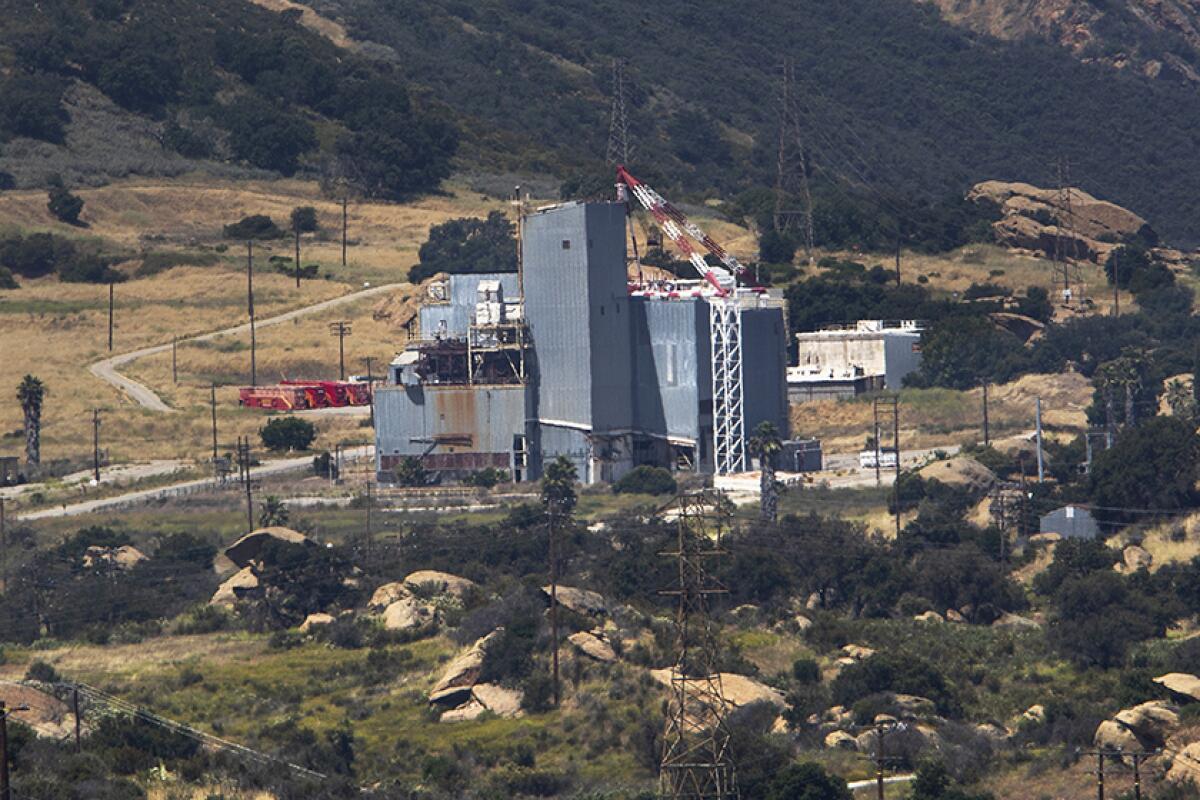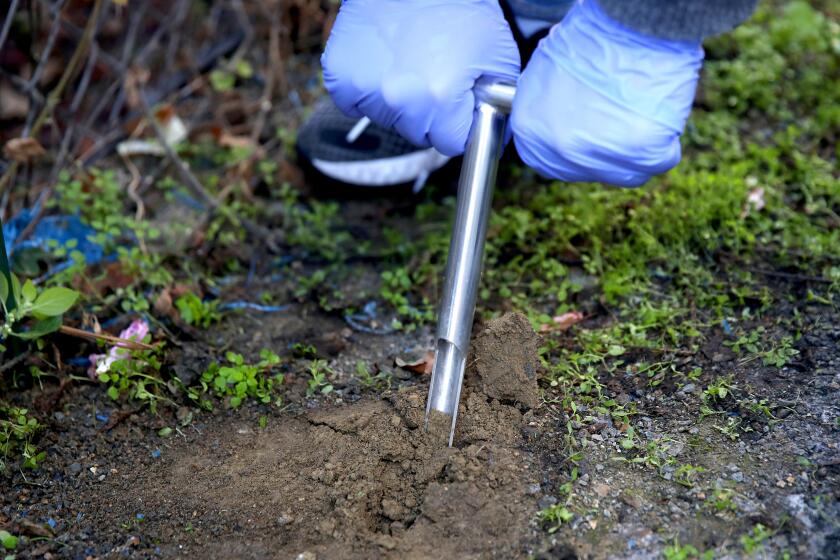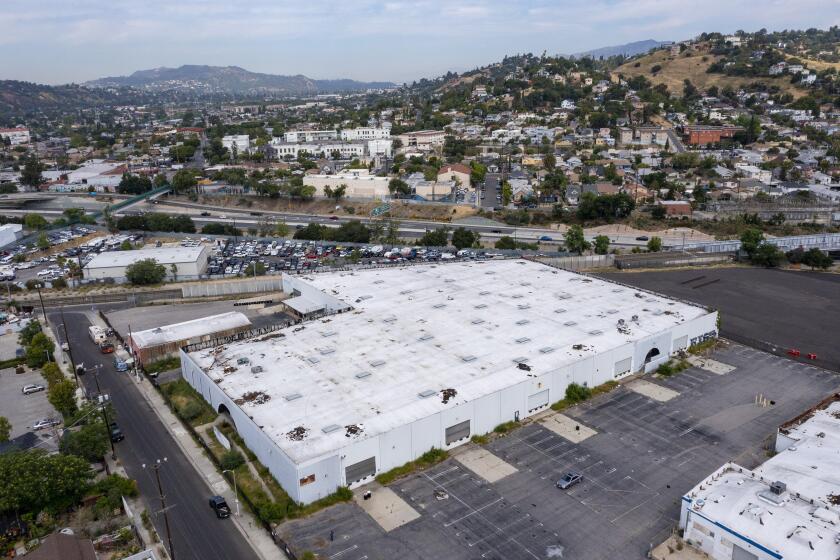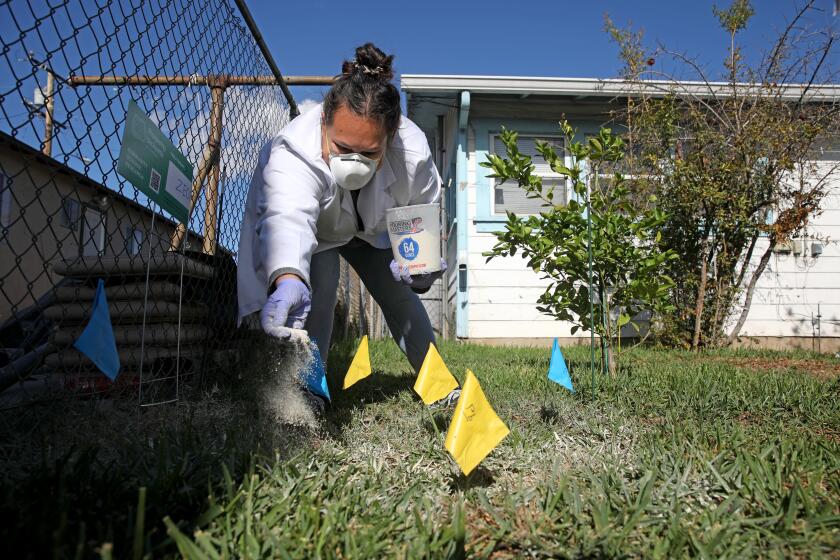Is a common industrial chemical fueling the spread of Parkinson’s disease?

A cancer-causing chemical that is widely used to degrease aviation components and heavy machinery could also be linked to Parkinson’s disease, according to a new research paper that recommends increased scrutiny of areas long contaminated by the compound.
Trichloroethylene, or TCE, is a colorless liquid that has been used to remove gunk from jet engines, strip paint and remove stains from shirts dropped off at the dry cleaners. Decades of widespread use in the U.S. have left thousands of sites contaminated by the TCE.
In a paper published Tuesday in the Journal of Parkinson’s Disease, authors hypothesize that this pollution may be contributing to the global spread of Parkinson’s, a neurological disorder characterized by uncontrollable tremors and slow movement. Although authors were unable to prove a direct connection, they cited a number of other studies that suggest TCE may play a role in the degenerative brain disorder, and urged further research on the matter.
“When Dr. [James] Parkinson described the condition in 1817 in London, he reported six individuals with the disease,” said Dr. Ray Dorsey, a neurology professor at the University of Rochester and lead author. “Two hundred years later, the global burden of disease is estimated that over 6 million people have the disease worldwide. So how do you go from six to 6 million? The rates are growing far faster than aging could explain alone. It has to be environmental factors. I think TCE and air pollution are important contributors.”
Numerous homes that underwent remediation have been left with lead concentrations in excess of state health standards, according to USC researchers.
Although prolonged or repeated exposure to TCE is known to cause kidney cancer, according to the National Cancer Institute, the paper’s authors argue that a connection to Parkinson’s disease would greatly increase its risk, particularly for contaminated sites that have been converted into housing developments.
“When a patient tells me about possible exposure, I Google their location and I almost always find a contaminated site,” Dorsey said.
The paper draws from more than two dozen research papers documenting apparent neurological effects associated with TCE exposure and highlights a number of Parkinson’s cases. In citing the ubiquitous nature of the chemical, the paper references a plume of contamination underlying a portion of Newport Beach, which is considered one of California’s largest residential communities affected by chemical vapors from legacy contamination.
TCE was first linked to Parkinson’s disease symptoms in 1969 in a 59-year-old man who worked with the chemical for more than 30 years, according to the paper. It was largely connected with workplace exposure, including a woman who worked with the chemical while cleaning houses and factory workers who degreased and cleaned metal parts. A 2012 study of twins found that occupational or hobby exposure was associated with a roughly 500% increased likelihood of developing Parkinson’s disease.
TCE production in the U.S. peaked in the 1970s, surpassing 600 million pounds per year. It was commonly used at military bases and industrial sites and disposed of at hazardous waste facilities.
Today, up to one-third of the drinking water supplies in the U.S. may contain TCE, according to the Environmental Protection Agency. But the chemical also threatens indoor air quality, as it can seep from the soil into homes through gaps in the foundation, where it is then inhaled as vapor.
In Southern California, a region facing a shortage of housing, redevelopment of lands contaminated by TCE and a host of other chemicals has raised alarms among community groups.
State toxic substance regulators are being called to task for their handling of a long-forgotten dump site in L.A.’s Lincoln Heights neighborhood.
The Santa Susana Field Laboratory site, where rocket engines were tested in the Simi Hills of Ventura County, was once remote. Today, 700,000 people live within 10 miles of the dormant site, where soil and groundwater are contaminated with more than 300 pollutants, including TCE.
Similarly, in Riverside County’s Jurupa Valley, development has crept closer to the Stringfellow Acid Pits, a closed hazardous waste site that handled TCE.
“The studies have always focused on cancer. And we’ve always said that there are other ancillary diseases and illnesses that show up with this that they’re not picking up on,” said Penny Newman, a Jurupa Valley resident and founder of the Center for Community Action and Environmental Justice.
“The site itself was isolated in a box canyon above the community, and there hadn’t been much development up there,” Newman said. “But as the city grew with the freeways, then they start looking for any piece of property that’s available. And it’s just in the last few years, people have started looking to how they can develop up around the side” of the site.
In Newport Beach, the chemicals in shallow groundwater were left by a former testing ground for missile systems. From 1957 to 1993, Ford Motor Co. operated a 98-acre aeronautics campus where it developed tactical missile systems. After the facility was demolished, the site underwent some environmental remediation and was subsequently redeveloped into residential properties, including multimillion-dollar homes. However, some chemical contamination remained and migrated with groundwater into surrounding areas.
Groundwater within Newport Beach isn’t used for drinking, and TCE vapor levels weren’t considered a threat to public health risk at the time. However, in 2014, the U.S. Environmental Protection Agency Region 9 issued a memo about the dangers of breathing TCE vapors. Soon after, California revised its health thresholds for TCE exposure.
Since 2018, consultants hired by Ford, under the supervision of the Santa Ana Regional Water Quality Control Board, have conducted soil vapor monitoring in the area surrounding the former site.
“Ford believes that access to a healthy and clean environment is a basic human right, including for the residents of Newport Beach,” the company said in a statement. “Since 1996, Ford has been working proactively with the Santa Ana Regional Water Quality Control Board to address volatile organic compounds in soil and groundwater. We have regularly provided updates to the community and will continue to do so.”
Many community members and advocates were unsatisfied with the pledge, with one resident dismissing it as ‘another DTSC world apology tour.’
So far, more than 350 residential properties and three commercial properties have had their indoor air sampled. Vapor from TCE and a related solvent — tetrachloroethylene, or PCE — have been detected above screening levels in 129 homes. Air purifiers have been offered to about 30 households where data suggested vapor intrusion was occurring.
Outside homes, a network of 424 underground monitors collect measurements of vapors at depth. In some cases, these probes have measured TCE concentrations more than 100 times the state residential limit.
In Bayridge Park and Belcourt Terrace, two of the communities with the greatest concentrations, Ford is working to install systems of underground pipes designed to treat underground vapors for roughly a year, which is expected to lower indoor TCE levels to state standards, according to Jessica Law, an engineering geologist with the water board.
“This is one of the wealthiest parts of the entire United States,” said Dorsey, who grew up in Newport Beach. “If this is happening in a resource-rich area, think about what’s happening in a resource-poor area.”
Environmental advocates say exposure to TCE is avoidable. New York and Minnesota have banned its use, and earlier this year, the federal EPA determined that TCE presents “an unreasonable risk of injury to human health,” a designation that paves the way for potential regulation.
In Jurupa Valley, the California Department of Toxic Substances Control continues to grapple with TCE contamination that spilled out of a long-shuttered hazardous waste site. From 1956 to 1972, about 34 million gallons of liquid industrial waste were discharged into evaporation pools in the Stringfellow Acid Pits in a canyon in the Jurupa Mountains. The pollution escaped when floodwaters carried contaminants off site and into a community below.
The state spent millions of dollars installing a network of wells to extract and treat a plume of contaminated water. Despite substantial progress, monitoring in 2018 revealed TCE vapors continued to exceed state health standards.
But after years of drought, which allowed for more contaminated water to be treated and removed, locals now worry contamination might spread with rain and snowmelt.
“It’s all in that soil,” said Jurupa Valley’s Newman. “So if you activate that again and it becomes mobile through the groundwater, you’re gonna have it start coming down [into the community] again.”
More to Read
Sign up for Essential California
The most important California stories and recommendations in your inbox every morning.
You may occasionally receive promotional content from the Los Angeles Times.














